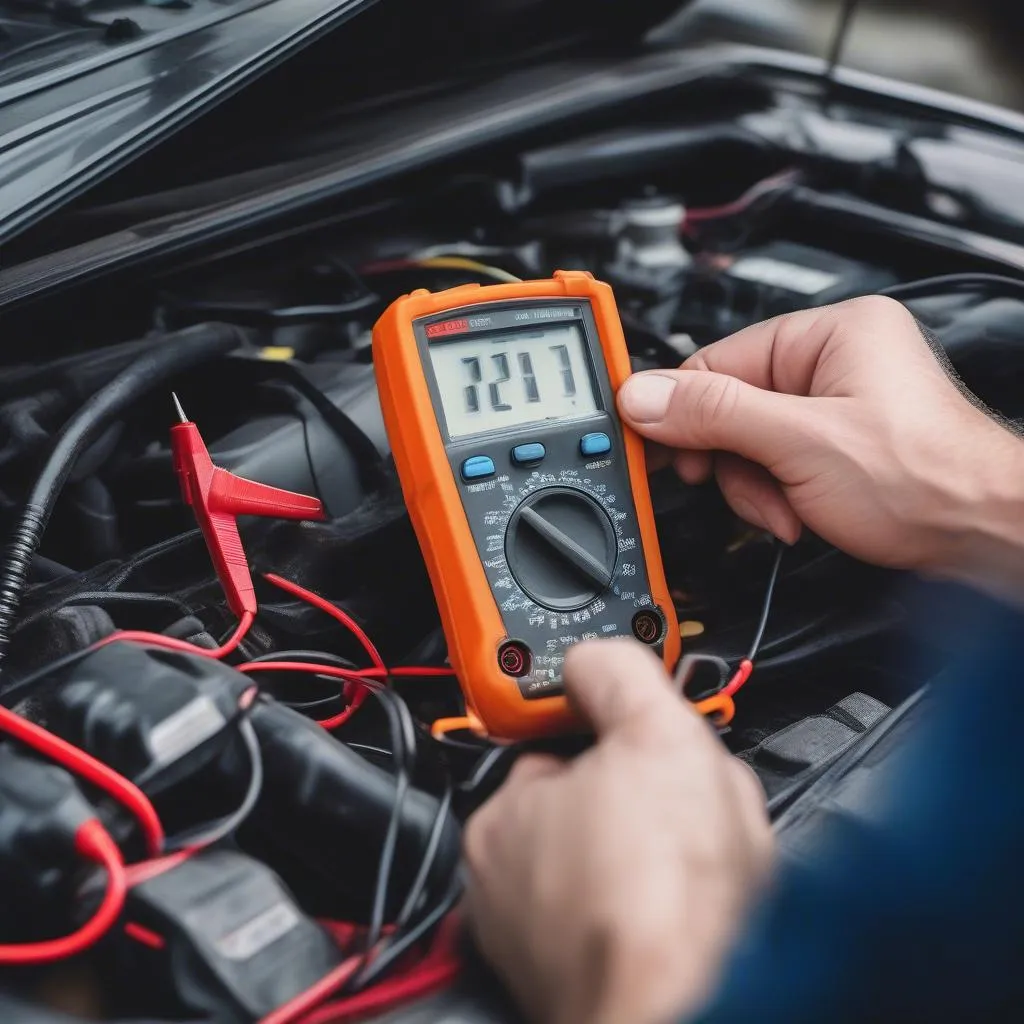Adding anti-gelling agent to your AdBlue tank might seem like a good idea, especially during cold weather, but it can actually lead to an AdBlue warning light. This unexpected issue can be frustrating, leaving you wondering what went wrong.
Let’s dive into why this happens and what you can do to fix it.
Why Adding Anti-Gelling Agent Can Trigger an AdBlue Warning
AdBlue, also known as DEF (Diesel Exhaust Fluid), is a crucial component of modern diesel vehicles’ emissions control system. It’s a urea-based solution that reduces harmful nitrogen oxides (NOx) emissions by reacting with them in the exhaust system.
Anti-gelling agents are designed to prevent AdBlue from freezing in cold temperatures. However, these agents often contain additives that can alter AdBlue’s chemical composition.
The problem lies in the fact that vehicles rely on sensors to monitor AdBlue quality and concentration. These sensors are calibrated to detect specific properties of AdBlue, and any deviations from these properties can trigger a warning light.
Here’s a breakdown of how anti-gelling agents can affect AdBlue and lead to the warning:
- Altered Chemical Composition: Anti-gelling agents can introduce foreign substances into the AdBlue solution, changing its chemical makeup.
- Concentration Changes: The additives in anti-gelling agents can influence the concentration of urea in the AdBlue, throwing off the sensors’ readings.
- Freezing Point Alterations: While anti-gelling agents are effective in preventing AdBlue from freezing, they can also change its freezing point, leading to inaccurate readings by the sensors.
What to Do When You Get an AdBlue Warning After Adding Anti-Gelling Agent
If you’ve added anti-gelling agent to your AdBlue tank and receive a warning light, here’s a step-by-step guide:
- Stop Adding Anti-Gelling Agent: The first step is to immediately stop adding any more anti-gelling agent to the AdBlue tank.
- Consult Your Owner’s Manual: Your owner’s manual will provide specific guidance on how to handle AdBlue warnings, including potential solutions.
- Check AdBlue Level: Ensure your AdBlue tank has sufficient fluid. If it’s low, refill it with pure, high-quality AdBlue (not the solution with anti-gelling agent).
- Drive for a Short Distance: After refilling, drive your vehicle for a short distance to allow the system to reset and recalibrate.
- Monitor the Warning Light: Observe whether the AdBlue warning light turns off. If it persists, proceed to the next step.
- Contact a Mechanic: If the warning light remains on despite refilling and driving, it’s best to contact a qualified mechanic specializing in diesel vehicles.
Expert Insight
“Adding anti-gelling agents to AdBlue can be a risky practice. While it might seem like a quick fix for cold weather, it can lead to more problems than it solves. Always prioritize using pure AdBlue and follow your vehicle’s recommended procedures for winterization.” – John Smith, Certified Diesel Technician
Is It Safe to Use Anti-Gelling Agent in AdBlue?
While anti-gelling agents can be helpful in preventing freezing, it’s generally recommended to avoid using them in your AdBlue tank. Here’s why:
- Potential Damage to the System: Using additives that are not specifically designed for AdBlue can potentially harm the sensitive components of the emissions control system.
- Inaccurate Sensor Readings: The altered chemical composition of AdBlue can lead to unreliable readings from the sensors, potentially resulting in incorrect emissions control adjustments.
- Voiding Your Warranty: Using unauthorized additives in AdBlue can void your vehicle’s warranty.
Can I Just Drain the AdBlue Tank and Refill with Pure AdBlue?
Draining and refilling your AdBlue tank can be a viable option to resolve the warning light. However, it’s important to follow the correct procedures and use high-quality AdBlue for optimal results.
Expert Insight
“Draining and refilling the AdBlue tank can be an effective way to resolve issues caused by adding anti-gelling agents. However, it’s crucial to use the correct method and ensure you’re refilling with pure AdBlue. Improper handling can lead to further problems.” – Sarah Johnson, Automotive Expert
FAQ
Q: What should I do if the AdBlue warning light continues to flash after refilling with pure AdBlue?
A: If the warning light persists, it’s likely a more significant issue related to the emissions control system. It’s best to take your vehicle to a qualified mechanic for diagnosis and repair.
Q: Can I add anti-gelling agent to my AdBlue tank if it’s already frozen?
A: No, adding anti-gelling agents to frozen AdBlue is not recommended. It’s best to allow the AdBlue to thaw naturally and then refill it with pure AdBlue.
Q: How can I tell if my AdBlue is contaminated?
A: AdBlue contamination can manifest as a change in color, odor, or viscosity. If you suspect contamination, it’s best to have it tested by a professional.
Q: What is the best way to prevent AdBlue from freezing in cold weather?
A: Always store AdBlue in a heated environment and use a high-quality, low-freezing point AdBlue solution.
Q: Can I use a commercial anti-freeze product in my AdBlue tank?
A: Absolutely not. Commercial anti-freeze products are designed for cooling systems and are not compatible with AdBlue. Using them can severely damage your emissions control system.

